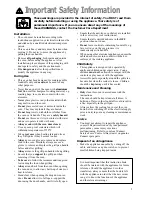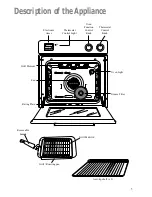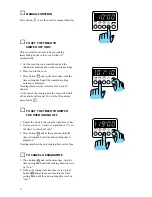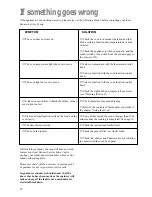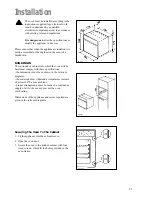
11
Food
Shelf
Cooking
Position
Temp (
°
C)
Biscuits
180-190
Bread
210-220
Casseroles
130-140
Cakes:
Small and queen
160-170
Sponges
160-170
Madeira
140-150
Rich Fruit
130-140
Christmas
130-140
Meringues
90-100
Fish
170-190
Fruit Pies and Crumbles
190-200
Milk Puddings
130-140
Pastry:
Choux
Shortcrust
Flaky
190-200
Puff
Plate Tarts
180
Quiches/Flans
170-180
Scones
210-220
Roasting: Meat & Poultry
160-180
Cooking Chart
This chart is intended as a guide only. It may be necessary to increase or decrease the temperature to suit your
individual requirements. Only experience will enable you to determine the correct setting for your personal
requirements.
When roasting, ensure the meat is cooked thoroughly, use a meat thermometer if preferred to check the centre
temperature has reached the required temperature (see table below).
MEAT
TEMPERATURES
Beef
Rare - 60
°
C
Medium - 70
°
C
Well Done - 80
°
C
Pork
Well Done - 80
°
C
Lamb
Medium - 70
°
C
Well Done - 80
°
C
Cookware
Baking trays, oven dishes, etc. should not be placed
directly against the grid covering the fan at the back
of the oven, or placed on the oven base.
Do not use baking trays larger than 30 cm x 35 cm
(12 in x 14 in) as they will restrict the circulation of
heat and may affect performance.
The effects of dishes on cooking results
Dishes and tins vary in their thickness, conductivity,
colour, etc. which affects the way they transmit heat
to the food inside them:
A Aluminium, earthenware, oven glassware and
bright shiny utensils reduce cooking and
underneath browning.
B Enamelled cast iron, anodized aluminium,
aluminium with non-stick interior and coloured
exterior and dark, heavy utensils increase cooking
and underneath browning.
}
Shelf
positions
are not
critical but
ensure that
oven
shelves are
evenly
spaced
when more
than one is
used.


